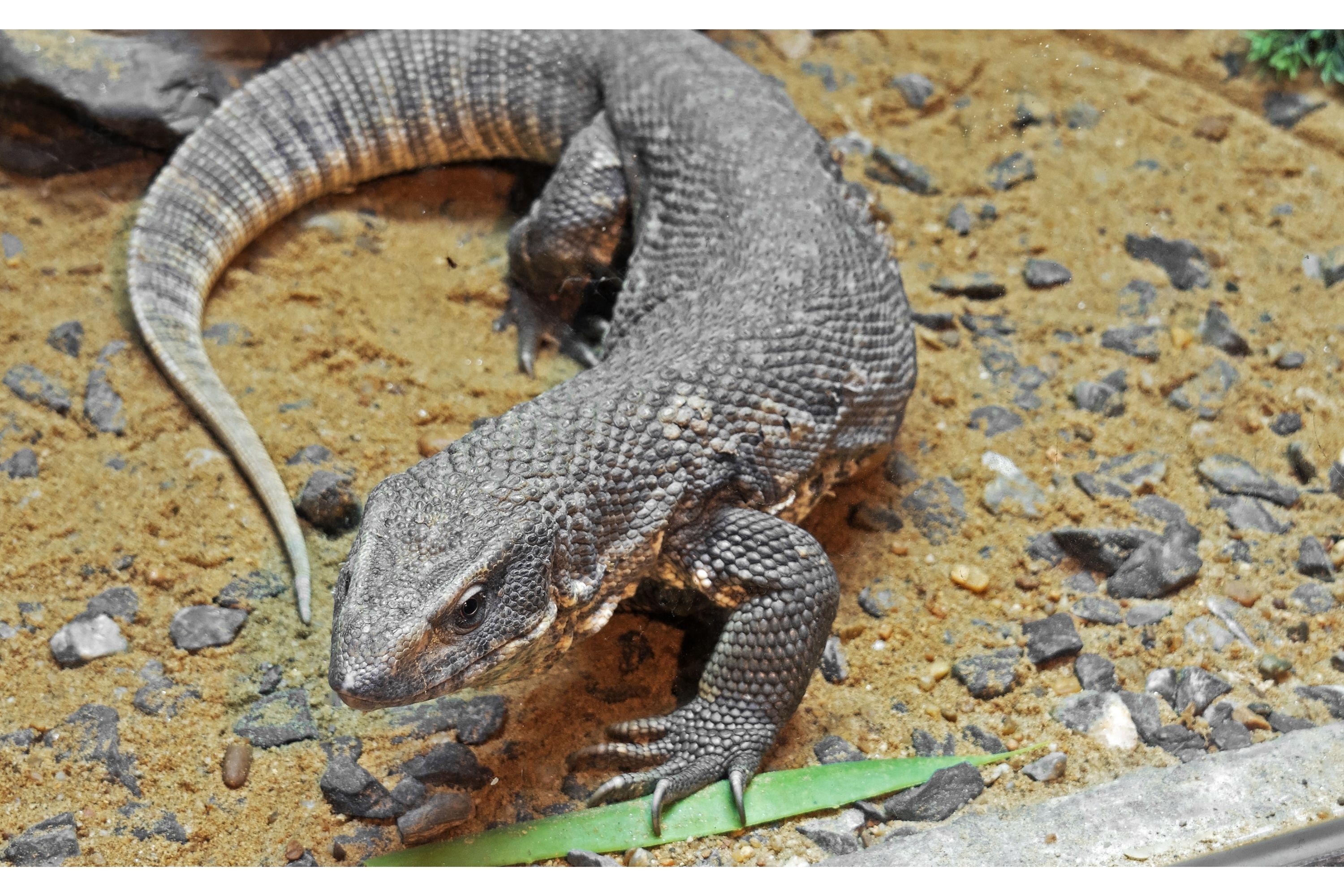Savannah monitor
(Varanus exanthematicus)

Description
The savannah monitor (Varanus (Polydaedalaus) exanthematicus) is a medium-sized species of monitor lizard native to Africa. The species is known as Bosc's monitor in Europe, since French scientist Louis Bosc first described the species. It belongs to the subgenus Polydaedalus. Savannah monitors are stoutly built, with relatively short limbs and toes, and skulls and dentition adapted to feed on hard-shelled prey. They are robust creatures, with powerful limbs for digging, powerful jaws and blunt, peglike teeth. Maximum size is rarely more than 100 cm. Their diet is much more restricted than that of other African monitor lizards, consisting mainly of snails, millipedes, orthopterans, beetles, and other invertebrates. The skin coloration pattern varies according to the local habitat substrate. The body scales are large, usually less than 100 scales around midbody, a partly laterally compressed tail with a double dorsal ridge and nostrils equidistant from the eyes and the tip of the snout. The Savannah monitor is often confused with the white-throat monitor (Varanus albigularis), which can grow to lengths of 5–6 ft. While similar in overall appearance, this species possesses significant morphological and ecological differences and is recognized as a very distinct species. Information about the diet of savannah monitors in the wild has been recorded in Senegal and Ghana. It feeds almost exclusively on arthropods and molluscs. In Senegal, Iulus millipedes were the most common prey of adults; in Ghana, small crickets formed the bulk of the diet of animals less than 2 months old; orthopterans (especially Brachytrupes), scorpions and amphibians were the most common prey of animals 6–7 months old. Many adults also consume large quantities of snails. Full grown V. exanthematicus have teeth that are quite blunt to help them crack and eat snails. The jaw has evolved to put maximum leverage at the back of the jaw to crush snail shells. Females dig a deep hole in the substrate, in which up to 40 or more eggs are laid, which hatch after about 156–160 days. Hatchlings start feeding a few days after the yolk sac has been absorbed, which may take 12 days or more after hatching.
Taxonomic tree:







